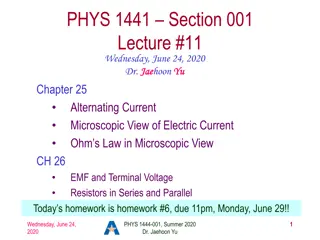
Functions Symbolically with Gordon's Book
Explore the symbolic representation of functions based on S.P. Gordon's book, Functions, Data, and Models. Learn about rules, context, examples, domain, and range of functions with practical illustrations.
Download Presentation

Please find below an Image/Link to download the presentation.
The content on the website is provided AS IS for your information and personal use only. It may not be sold, licensed, or shared on other websites without obtaining consent from the author. If you encounter any issues during the download, it is possible that the publisher has removed the file from their server.
You are allowed to download the files provided on this website for personal or commercial use, subject to the condition that they are used lawfully. All files are the property of their respective owners.
The content on the website is provided AS IS for your information and personal use only. It may not be sold, licensed, or shared on other websites without obtaining consent from the author.
E N D
Presentation Transcript
Representing Functions Symbolically All slides in this presentations are based on the book Functions, Data and Models, S.P. Gordon and F. S Gordon ISBN 978-0-88385-767-0
Function is a Rule A function is a rule which assigns a single value to the dependent variable (y) based on the value of the independent variable (x) If there is no context we use the notation y = f(x) which we read as y is a function f of x ? = ? ? = ?2 2 Note: f 1 = 12 2 = 1 ,f 3 = 32 2 = 7 p. 2
Function is a Rule Suppose now that ? = ? ? = ? What is g(4), g(9), g(-16)? p. 3
Function is a rule Suppose now that ? = ? ? = ? What is g(4), g(9), g(-16)? ? 4 = 4 = 2 ? 9 = 9 = 3 ? 16 = 16 = ????????? p. 4
Functions with a context Example: A ball is tossed straight up with initial velocity of 64 feet per second In a real-world context we use other letters that convey the meaning of the variables, e.g. t time H height P population C cost A area The height, H in feet of the ball above ground level t seconds after it is tossed is given by ? = ? ? = 64? 16?2 p. 5
Tossed Ball Example Initially ? = ? 0 = 64(0) 16(0)2= 0 feet After half a second ? = ? 0.5 = 64(0.5) 16(0.5)2= 28 feet After one second ? = ? 1 = 64(1) 16(1)2= 48 feet And so on ? = ? 2 = 64(2) 16(2)2= 64 feet ? = ? 3 = 64(3) 16(3)2= 48 feet ? = ? 4 = 64(4) 16(4)2= 0 feet p. 6
Domain and Range of a Function Domain of any function f: All possible values of the independent variable Range: All possible values of the dependent variable Ex. ? = ? ? = 64? 16?2 What is the domain/range of H? p. 7
Domain and Range of a Function Domain of any function f: All possible values of the independent variable Range: All possible values of the dependent variable ? = ? ? = 64? 16?2 What is the domain/range of H? Domain: 0 ? 4 ??????? Range: 0 ? 64 ???? Using interval notation: ? 0,4 ;? [0,64] p. 8
Domain and Range of a Function Estimate the domain and the range of the given function p. 9
Domain and Range of a Function Estimate the domain and the range of the given function Domain: 3.5 ? 5.5 Range: 19 ? 2.5 p. 10
Domain and Range of a Function How about ? = ? ? = ?? 1 ? = ? = ? 2 ? = ? ? = ?2 p. 11
Domain and Range of a Function Function Domain Range ? 0 ? 0 ? = ? ? = ?? Domain is [0, ) Range is [0, ) 1 ? 2 Domain is ,2 ?? (2, ) ? 0 Range is ,0 ?? (0, ) ? = ? = ? 2 ? 0 x any real number Domain is ( , ) ? = ? ? = ?2 Range is [0, ) p. 12
Distance covered at steady speed The distance (in miles) a car drives at steady speed is a function of the number of hours Denote the variables; Which is the independent variable? Which is the dependent variable? p. 13
Distance covered at steady speed The distance (in miles) a car drives at steady speed is a function of the number of hours Denote the variables; Which is the independent variable? Which is the dependent variable? D distance traveled, in miles, since beginning dependent variable t total time of trip, in hours - independent variable p. 14
Distance covered at steady speed The distance (in miles) a car drives at steady speed is a function of the number of hours What is the physical interpretation of ? 5 = 250? At what steady speed does the car drive? p. 15
Distance covered at steady speed The distance (in miles) a car drives at steady speed is a function of the number of hours What is the physical interpretation of ? 5 = 250? At what steady speed does the car drive? The car covers 250 miles in five hours. The steady speed is 50 miles per hour, i.e. ? ? = 50? p. 16
Distance covered at steady speed The distance (in miles) a car drives at steady speed is a function of the number of hours What is the meaning of ? ? = 300? What is the respective value of t? What is the meaning of D = ? 4.5 ? What is the respective value of D? p. 17
Distance covered at steady speed The distance (in miles) a car drives at steady speed is a function of the number of hours What is the meaning of ? ? = 300? The car has covered 300 miles in an unknown number of hours. What is the respective value of t? t = 6 hours What is the meaning of D = ? 4.5 ? After 4.5 hours the cars has covered D miles. What is the respective value of D? ? = 4.5 50 = 225 ????? p. 18
Population of a Country since 1930 What is the meaning of the variables? In what units are they measured? Explain the meaning of P = f 60 = 90 Suppose you are given the following graph p. 19
Population of a Country since 1930 What is the meaning of the variables? In what units are they measured? P population since 1930 in millions t number of years since 1930 Explain the meaning of P = f 60 = 90 In 1990 the population of this country was 90 million Suppose you are given the following graph p. 20
Population of a Country since 1930 Suppose you are given the following graph What does ? ? = 120 mean? What would be your estimate of t? What is the meaning of ? = ? 80 ? What is this value of P? What was the population in 1930? (estimate) What is the domain/range of the function ? = ? ? ? (estimate) p. 21
Proportionality y is proportional to x means that ? = ??, where k is a constant Example: How much you earn is directly proportional to how many hours you work if paid by hour y is inversely proportional to x means that ? =? ? where k is a constant Example: Speed and travel time ? =? ? (Remember: distance=time x steady speed) p. 22






















